Dinner needed in a hurry? This is a great make-ahead meal that requires very little time in the oven. The salad with cucumber provides some vegetables and the Greek tzasiki-type sauce on the meat just makes it perfect.
A couple of weeks ago I spent the weekend with daughter Sara and her family. And Sara wanted to spend part of Sunday doing some make-ahead meals for her family. Both of the kids are in sports, so weeknight mealtimes have to be jammed into what little time Sara can carve out of the late afternoon or evening. Sabrina drives herself mostly, but John the younger sibling is just 13, so he must be delivered and picked up and often John Sr. stays and watches his practices. Anyway, this is one of the meals we put together and Sara was kind enough to give me a portion so I could make it 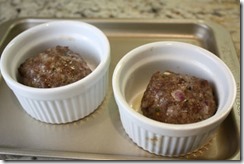 once I got home. I baked mine in 2 ramekins (just easier for my single portion).
once I got home. I baked mine in 2 ramekins (just easier for my single portion).
The recipe came from Cooking Light. Since making this Sara and I both agreed on a couple of things: (1) we would switch the amount of lamb and beef – we both wanted a more lamb flavor; (2) the baking time was not enough. So the recipe below has been changed. We also used full fat yogurt, but you don’t have to. We also thought that if the meat loaf was just slightly bigger, we could have eaten just one, so if I did this again, I’d do just that – I’d mound the meat loaves in the muffin tin or ramekin. You’d need to up the baking time if you did that. Lamb is rich, so halving the 2-meat loaf portion would cut down the calories significantly. The original recipe called for 10 ounces of beef and 5 ounces of lamb. That’s been switched, just so you know.
The other problem I had was that the meat loaf wasn’t really done well enough at 7 minutes baking and 3 minutes broiling. I did another 3 minutes of broil, and still the meat was really rare when I ate it (note blood-rare juice coming out of the left meat loaf in the photo). So I’ve upped the baking time to 9 minutes and 3+ minutes broiling. Do check the internal temp if you can – it should be about 160-165°F. The other things could be that pressing the meat into the muffin tin allows contact on the sides with the meat – maybe done that way it cooks in the shorter time. Just use a meat thermometer and gauge accordingly. In ramekins they didn’t quite touch the sides, so that may be why they weren’t quite so “done.”
The sauce was easy enough to make – it’s the standard kinds of ingredients for tzasiki sauce and was made ahead. On the recipe below I’ve also included instructions for freezing the meat – make them into mounds that will fit in a muffin tin or ramekin, place on a parchment or plastic wrap lined baking sheet and freeze, then package them for longer freezer storage.
If you added vegetables to the salad (it already has cucumber in it, but you could add bell pepper, for instance) you’d have a complete meal with the meat loaves, sauce and the salad.
What’s GOOD: these were tasty. Not necessarily off the charts, but not every meal can be that way, anyway. I would like them better next time with more lamb, hence the change in the recipe below. They were certainly easy to make and very quick for a weeknight dinner – providing the meat loaves were defrosted. The sauce is really good – don’t skimp on that part as I think it makes the dish.
What’s NOT: nothing, really. Altogether a good dish and easy.
printer-friendly CutePDF
Files: MasterCook 5+ and MasterCook 14 (click on link to open recipe in MC)
* Exported from MasterCook *
Mini Greek-Style Meat Loaves with Arugula Salad
Recipe By: Adapted slightly from Cooking Light, May 2013
Serving Size: 4
5 ounces ground sirloin
10 ounces ground lamb
1/3 cup dry breadcrumbs
1/3 cup red onion — grated or VERY finely minced
4 teaspoons chopped fresh mint
4 teaspoons chopped fresh thyme
3/8 teaspoon salt — divided
1/4 teaspoon ground allspice
1/4 teaspoon crushed red pepper
3 garlic cloves — minced
1 large egg — lightly beaten Cooking spray
YOGURT-FETA SAUCE:
1/2 cup Greek yogurt, full-fat — or use nonfat if preferred
2 ounces feta cheese — crumbled
1 tablespoon fresh lemon juice — divided
SALAD & DRESSING:
1 tablespoon extra-virgin olive oil
1 tablespoon fresh lemon juice
1/4 teaspoon freshly ground black pepper
4 cups arugula leaves — [or combo with spinach]
3/4 cup cucumber — (1/4-inch-thick) diagonally sliced, seeded, peeled
NOTES: If you want to make these ahead to freeze, form into shapes that will fit into a muffin tin or ramekins, place on a plastic-wrap lined baking sheet & freeze solid. Then package and seal for longer-term storage. Sauce cannot be frozen. Each serving is 2 of these patties.
1. Preheat oven to 450°.
2. MEAT: Combine first 4 ingredients in a large bowl. Stir in 1 tablespoon mint, 1 tablespoon thyme, 1/4 teaspoon salt, allspice, and next 3 ingredients (through egg). Press meat mixture into 8 muffin cups coated with cooking spray. (if you have more empty muffin cups, fill that half full with water during the baking.) Bake at 450° for 8-9 minutes. Turn broiler to high; broil 3 minutes. If top isn’t starting to brown, continue on broil for another minute. If using an instant-read thermometer, bake until the center of the meat loaf is about 160°-165°F which will still be just past pink in the middle. Cook longer if you prefer it more well done.
3. SAUCE: Combine yogurt, feta, 1 tablespoon juice, 1 teaspoon mint, and 1 teaspoon thyme in a mini food processor; pulse 10 times to combine.
4. SALAD: Combine 1 tablespoon juice, olive oil, 1/8 teaspoon salt, and pepper in a bowl; stir. Add arugula and cucumber; toss.
Per Serving: 463 Calories; 34g Fat (66.4% calories from fat); 26g Protein; 12g Carbohydrate; 1g Dietary Fiber; 147mg Cholesterol; 534mg Sodium.





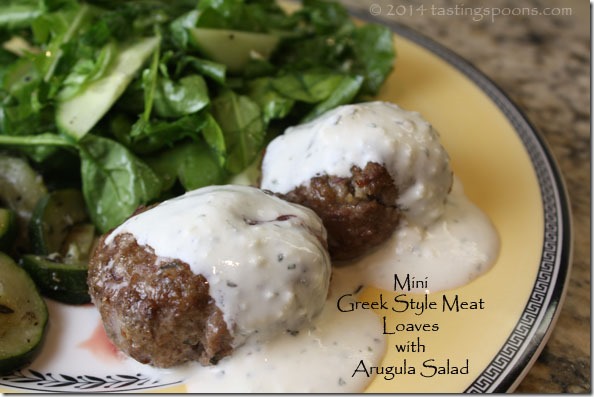

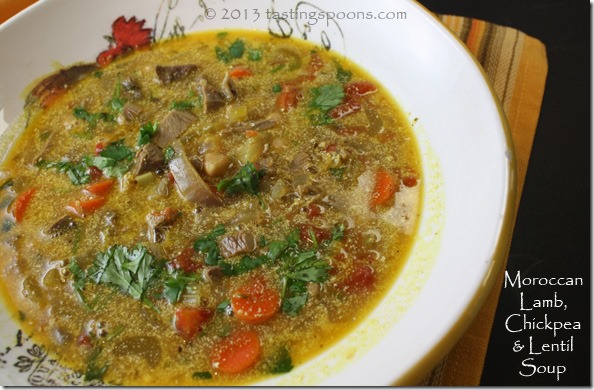
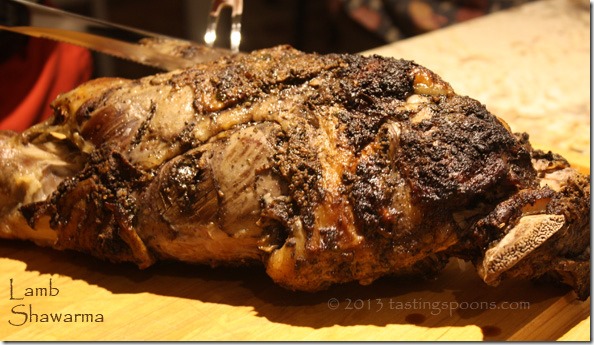
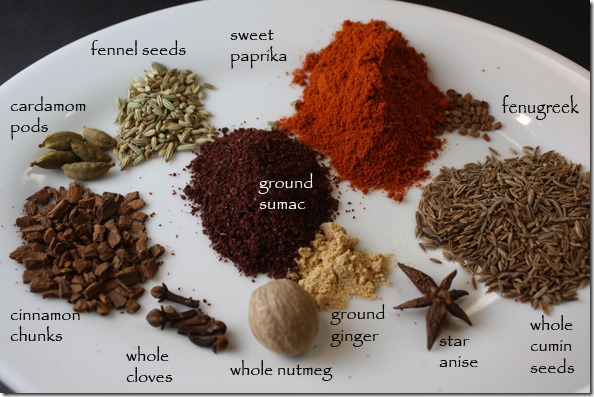
 remnants of the herbs and spices in the little cups. At left you can see an example of one (from tryanythingonce blog). Those cups would have held all of the spices you see on the plate above. At right is a photo from the underground caverns (from the vagablond.com). The cavern we visited went down something like 8 stories below ground. It was an ever-winding spiral, down, down, down. Only the top 3 “floors” closest to the surface were open to the public and some of the connecting tunnels were very narrow and low. My DH, who is tall, got stuck in one of them as he bent over trying to move forward, and had to be pushed slightly from behind to get through the passage. Scary for him, as he gets claustrophobic. The picture here shows very wide and tall tunnels. Not so in the one we visited!
remnants of the herbs and spices in the little cups. At left you can see an example of one (from tryanythingonce blog). Those cups would have held all of the spices you see on the plate above. At right is a photo from the underground caverns (from the vagablond.com). The cavern we visited went down something like 8 stories below ground. It was an ever-winding spiral, down, down, down. Only the top 3 “floors” closest to the surface were open to the public and some of the connecting tunnels were very narrow and low. My DH, who is tall, got stuck in one of them as he bent over trying to move forward, and had to be pushed slightly from behind to get through the passage. Scary for him, as he gets claustrophobic. The picture here shows very wide and tall tunnels. Not so in the one we visited!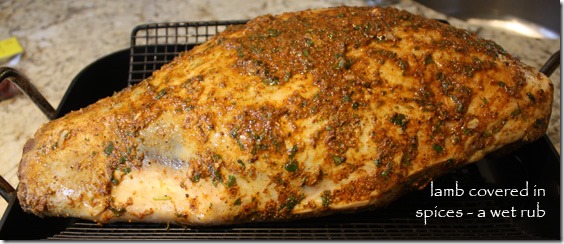
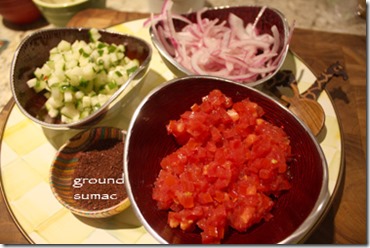
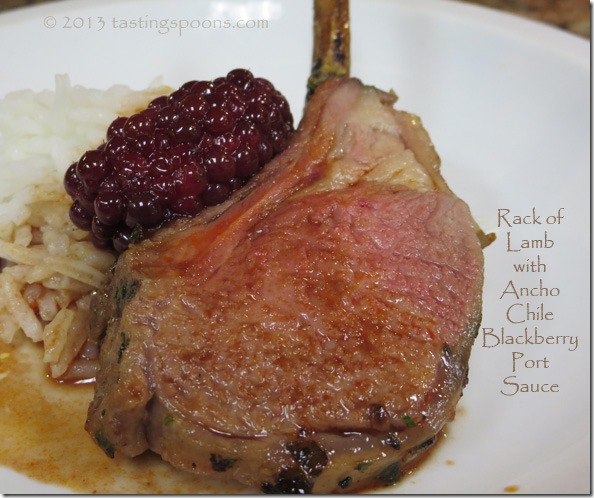
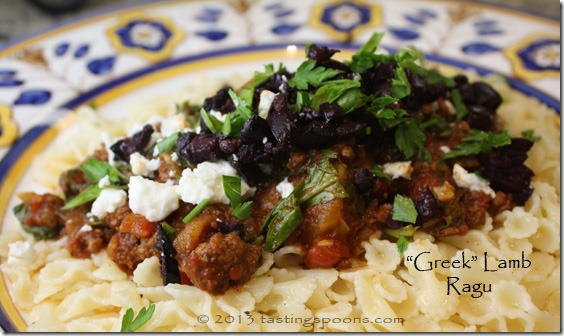
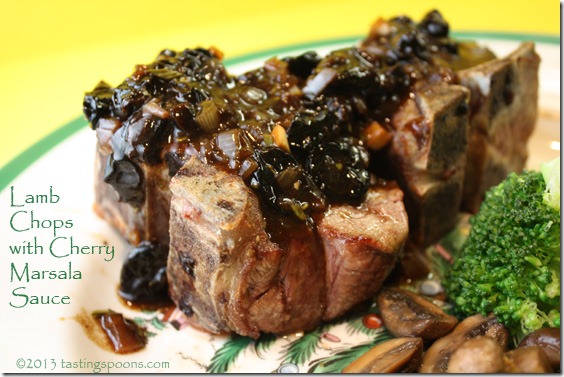
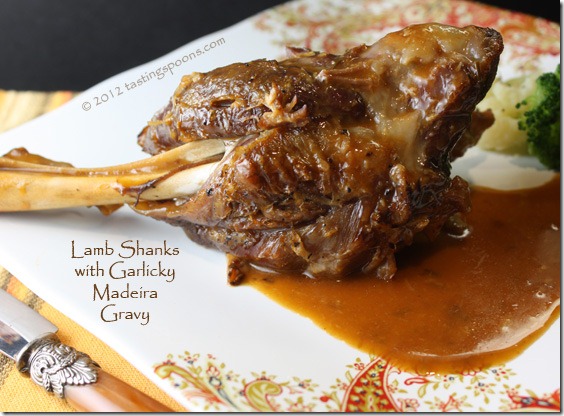
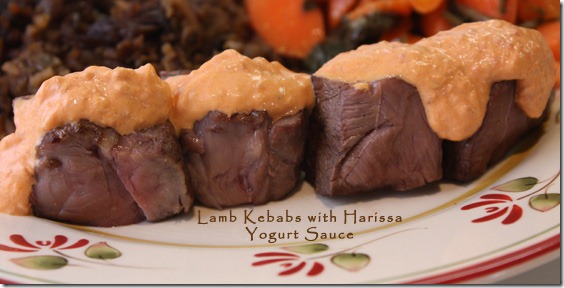
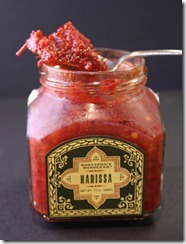
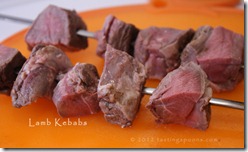
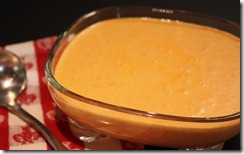
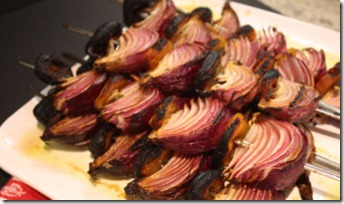
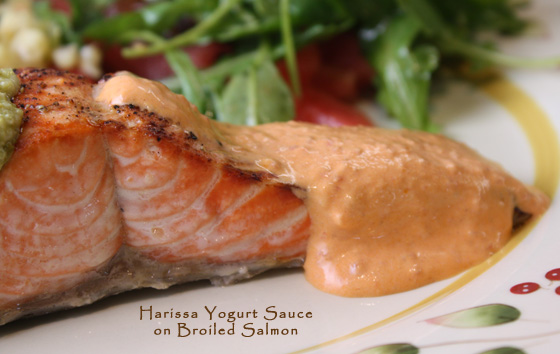
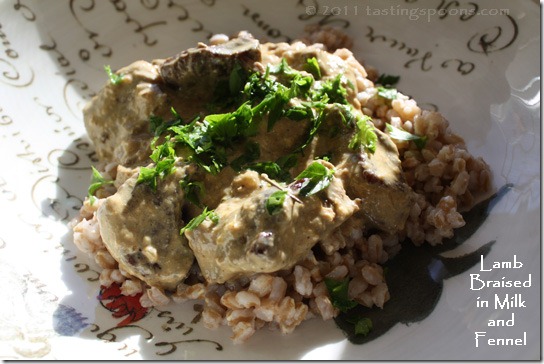
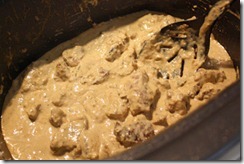
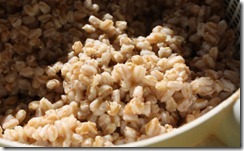
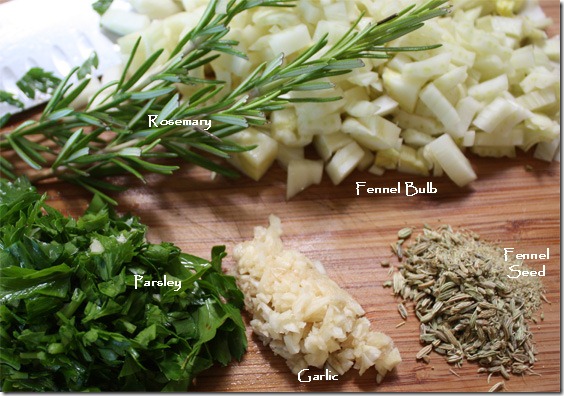
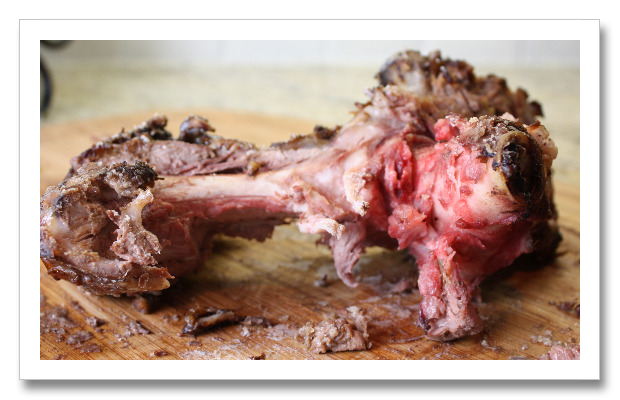
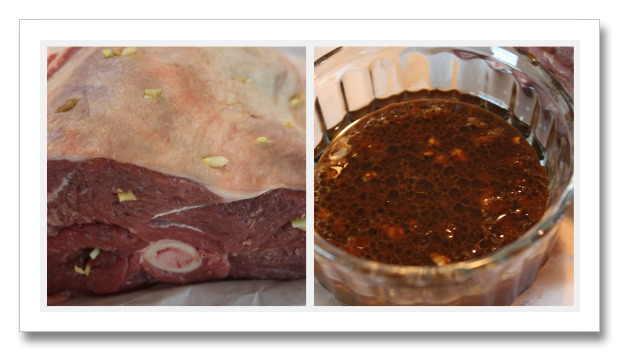
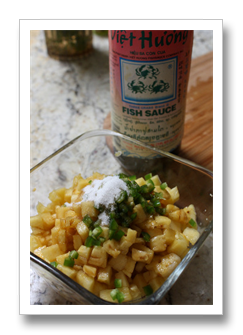
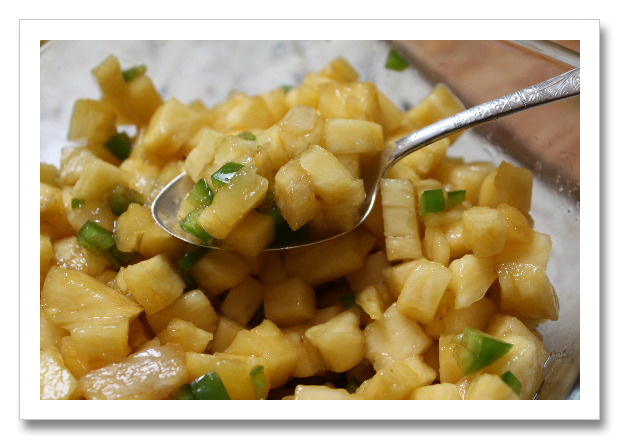
Leave a Comment!